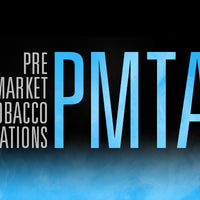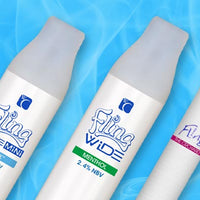Ah, New York. The glitz and glamour of Manhattan, the beauty of the rolling hills of the Adirondacks, that unmistakable accent; all things we love about the Empire State. Unfortunately, e-cigarette users now have something to add to their “don’t love” list about New York State. As of November 22, 2017, the state’s Clean Indoor Air Act now prohibits the use of e-cigarettes in public indoor spaces.
New York State's Clean Indoor Air Act Now Includes Vaping

What this vaping ban means for New Yorkers and visitors is that they’ll no longer be allowed to vape in:
- Any indoor workplace
- On public transportation
- Inside of any public or private college/university building
- In outdoor areas where smoking is banned (includes parks, beaches, and pedestrian plazas)
You’ll still be permitted by law to vape in private homes, hotel rooms, and outdoor dining areas that don’t have a roof or ceiling. See, those legislators still care about us!
A vaping ban like this coming out of New York should be no surprise. The state has one of the strictest sets of tobacco-use laws in the nation, going so far as to even set a minimum price of $10.50 on a pack of cigarettes. Aside from the fact that, yet again, e-cigarettes are being placed on the same level and analog cigarette smoking, the most alarming aspect of this new law is the legal justification used in the recently passed amendment. You can find the whole transcript of the amendment here.
Here are a few of the most disappointing statements that we found while reading through the amendment:
"These devices do not contain tobacco, rather they heat up liquid nicotine and emit vapor."
This is the 2nd sentence of the Justification portion of the amendment. It’s disappointing to see that, despite making it VERY CLEAR that e-cigarettes do not contain tobacco, New York State legislators still feel that the product should be lumped in with tobacco. Despite the law’s wording being very clear on this, one of the bill’s co-sponsors, state senator David Carlucci still claims “You’ve got to really treat it(e-cigarettes) as regular cigarettes.”
"In fact, testing performed by the FDA found that electronic cigarettes can be dangerous because users inhale carcinogens and toxic chemicals, such as diethylene glycol, an ingredient found in antifreeze."
Perhaps the full report didn’t make it to Albany for legislators to read before writing the bill for the vaping ban. When the FDA performed these tests, they purchased cartridges from just 2 brands in a variety of flavors and nicotine strengths. Of the 16 cartridges that were tested, only 1 cartridge was found to have diethylene glycol in the e-liquid, at a concentration of less than 1%. Their findings don’t lend evidence of a dangerous product, but rather, of a contaminated sample. You’d need to drink over a gallon of the e-liquid the FDA tested to receive a fatal dose of diethylene glycol!
"Recent studies have suggested that e-cigarettes may contain more carcinogens than traditional cigarettes, with some brands containing 10 times the carcinogens of traditional cigarettes."
The only study we could find that was related to this claim was done in Japan in 2014. Because the Japan Health Ministry commissioned the study, the results were not publicly shared. A Japanese newspaper was able to interview the scientists who performed the study, who did not specify which carcinogens or at what levels they were found during the testing. The fact checking site, Snopes, has determined the claim that electronic cigarettes contain ten times as many carcinogens as tobacco cigarettes to be Mostly False.
"Recent studies have also shown that secondhand smoke from e-cigarettes contains elevated levels, at nearly four times higher than that of regular cigarettes, of toxic metal such as nickel and chromium."
Even if an e-cigarette user took over 1200 puffs a day, the exposure level to metals such as nickel and chromium were as much as 37x lower than the Permissible Daily Exposure Limits, as defined by United States Pharmacopeia. Health risks from these types of exposures to metals are normally associated with those that work in the mining or metal processing industry. This figure is only addressing the e-cigarette user’s exposure through inhalation, and does not factor in exposure through secondhand vapor. The most recent study we found, performed by researchers at Johns Hopkins University in 2017, DID NOT measure metals in vapor, rather, it focused on e-liquids from 5 major retail brands.
Despite the slowly changing opinion on electronic cigarettes as an alternative to cigarette use, it’s disappointing to see that lawmakers will ignore facts and research, and instead base their votes for the vaping ban on sensationalized headlines and research funded by e-cigarette opponents. New York joins California, Connecticut, Delaware, Hawaii, Maine, New Jersey, North Dakota, Oregon, Utah, and Vermont in rolling out statewide vaping bans.






